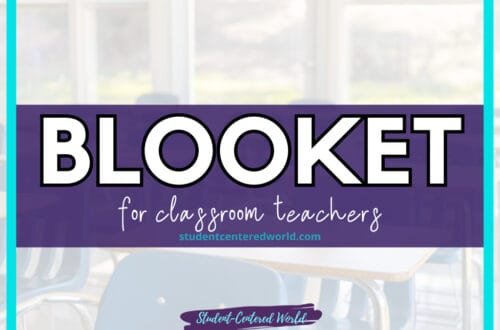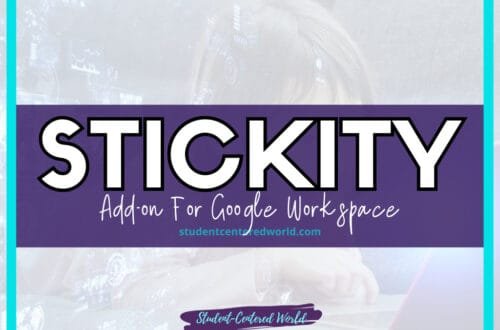Padlet: How Teachers Can Use to Support Teaching
As technology continues to reshape education, tools like Padlet are revolutionizing how teachers engage students, collaborate, and showcase classroom creativity. Padlet, often described as a digital bulletin board, allows teachers and students to create, share, and interact with content in a user-friendly environment.
Whether you’re a seasoned tech-savvy educator or just beginning your journey with interactive boards, Padlet offers something for everyone. Here’s a comprehensive guide to what Padlet is, how to use it, and the benefits it brings to the classroom.
Step into my series as I unveil an array of cutting-edge educational technology tools suitable for the classroom. This collection features tools that bring you a mix of the classics you love and some cool hidden gems – because we all know the best tools aren’t always the ones in the spotlight.
What Is Padlet?
Padlet is an online platform that functions as a digital canvas, enabling users to organize and share information visually. Think of it as a piece of paper that grows with your ideas—perfect for brainstorming, organizing classroom content, or creating collaborative projects.

Padlet comes in various formats to suit different needs:
- Padlet Wall: A classic format resembling a bulletin board where users can pin notes, links, or files.
- Shelf Padlet: Best for organizing information into categories or columns, like a book review or project plan.
- Map Padlet: Ideal for geography lessons or planning a field trip, with interactive map features.
- Magic Padlet: A playful option for creative activities like group greeting cards or inspiration boards.
- Padlet Mini: A compact version optimized for smaller devices, making it easier for on-the-go access.
With public Padlets available for inspiration and a free version for beginners, Padlet is a great tool for educators and individuals of all ages.
Benefits of Using Padlet in the Classroom
- Engaging and Intuitive: Padlet’s user-friendly interface ensures students can quickly grasp how to use it, regardless of grade level or tech experience.
- Collaboration: Whether it’s a group discussion, a shared group greeting card, or a class-wide map Padlet, Padlet fosters a collaborative environment.
- Versatility: From book reviews to interactive diagrams, Padlet adapts to any subject or activity. Its flexibility makes it a great tool for cross-curricular applications.
- Inclusivity: Padlet accommodates students’ names, contributions, and ideas in a single space, promoting inclusivity and participation.
- Accessibility: With features like Padlet Mini and compatibility with smaller devices, students can access and contribute to their boards anywhere.
- Security and Privacy: Padlet prioritizes data privacy with customizable privacy settings and adherence to a strict privacy policy, ensuring a safe environment for students.
- Advanced Features: For those ready to upgrade, Padlet offers premium features like unlimited Padlets, voting features, and priority support.
Creative Ways to Use Padlet in the Classroom
Padlet provides endless opportunities for creativity, collaboration, and engagement, making it a valuable tool for any educator. Here are some practical and innovative ideas for incorporating Padlet into your teaching:
- Interactive Brainstorming
Use Padlet as a discussion board to gather students’ ideas, activate prior knowledge, or encourage group brainstorming. Its visual layout promotes creativity and ensures every voice is heard. - Student Work Showcase
Transform your Padlet into a virtual gallery where students can display beautiful projects, writings, and multimedia presentations. This not only highlights their efforts but fosters pride and ownership in their work. - Exit Tickets
End your lessons by collecting reflections, questions, or key takeaways. This is the easiest way to gather feedback and plan future teaching strategies. - Group Projects and Collaboration
Students can collaborate on Padlet to build wisdom walls, conduct a scavenger hunt, create a business plan, or even craft a group greeting card for special occasions. - Hidden Meanings and Theme Exploration
Encourage deeper thinking by having students use Padlet to explore and discuss themes with subtle or layered meanings. It’s perfect for literature or art analysis. - Lesson Wrap-Up and Summarization
Use Padlet as a creative way to wrap up a lesson. For instance, students can collectively build a Venn diagram to summarize key concepts or compare ideas. - Teacher Organization and Resources
Padlet isn’t just for students—it’s a powerful tool for teachers. Organize professional development materials, track blog ideas, maintain a suggestion box, or even plan your weekly grocery list. - Interactive Feedback Boards
Turn your Padlet into a platform for gathering student feedback anonymously. This approach can encourage honest insights and foster an open classroom culture.
By leveraging these ideas, you can make your Padlet boards dynamic hubs for creativity, learning, and communication, tailored to suit your classroom’s unique needs.
How to Get Started with Padlet
Starting with Padlet is simple and intuitive:
1. Create an Account
Sign up for an own account using your email or a social platform login. The free version offers a limited number of padlets, but it’s the perfect starting point for exploring its features.
2. Set Up Your First Padlet Board
- Choose from the available formats: wall padlets, shelf padlets, or map padlets.
- Customize your padlet board with custom wallpapers and backgrounds to make it visually engaging.
- Adjust the privacy settings based on your needs. Options include public access, password protection, or inviting specific users for extra security.
3. Add Content
Click or double-click on the empty page to create a new note. Users can add:
- Text notes or own text posts
- Audio files
- Images, videos, or links of any file type
- Diagrams like a Venn diagram
Padlet’s editor buttons make it easy to format content, ensuring your board looks polished.
4. Share with Students
Share the Padlet wall with your students using a QR code, direct link, or embedding it in your virtual classroom tools like Google Classroom.
Terms of Use and Support: What You Need to Know
Before incorporating Padlet into your classroom, it’s important to understand its terms of use and privacy policy. These documents outline how the platform collects, stores, and uses data, ensuring compliance with educational standards and student privacy laws. Familiarizing yourself with these terms helps you make informed decisions about how to use Padlet responsibly while maintaining the trust and safety of your students.
Additionally, Padlet offers flexible privacy settings, allowing you to control who can access and interact with your boards, ensuring an extra layer of security for classroom use.
If you encounter challenges or have additional questions, Padlet provides several options for support. Its built-in help resources include guides, tutorials, and FAQs to address common issues and maximize your experience. You can also connect with fellow educators and users through Padlet’s community forums, where tips and solutions are shared.
For those using paid plans, priority support is available, offering quicker access to assistance for more complex issues or advanced troubleshooting. Whether you’re using the free or premium version, Padlet ensures that help is always within reach, making it a reliable tool for your classroom needs.
Final Thoughts
Padlet is a dynamic tool that brings collaboration, creativity, and organization to the classroom. Its versatility makes it suitable for educators of all levels, enabling you to adapt it to various subjects, activities, and learning environments.
Whether you’re organizing classroom content, encouraging your own text posts, or showcasing beautiful projects, Padlet transforms traditional teaching methods into interactive, engaging experiences.
Stop Driving the Teacher Struggle Bus
Are you struggling with student engagement, apathy, or keeping your class on track?
💫💫 There’s hope! 💫💫
If you’re ready to take the first step towards reviving student engagement and transforming your classroom, I invite you to join me for my free workshop “Reversing Student Apathy” designed to equip educators with innovative strategies that work.

This free teacher workshop offers educators a valuable opportunity to explore and address student apathy. By examining its causes and discussing strategies, participants will learn how to make meaningful changes in their teaching methods that are actually working. The sessions are engaging and collaborative, allowing educators to share experiences and develop a collective approach to improving student engagement.
Highlights include:
- Understanding the roots of student apathy and its impact.
- Strategies for enhancing classroom dynamics.
- The importance of educator-student relationships.
- Innovative teaching approaches for today’s students.
By the end of the workshop, you will not only understand what you need to accomplish to stabilize the 4 pillars of your classroom, but you will also walk away with 5 tangible ideas to try in the classroom the very next day.
Join today to be part of the solution to reigniting student enthusiasm and engagement.






